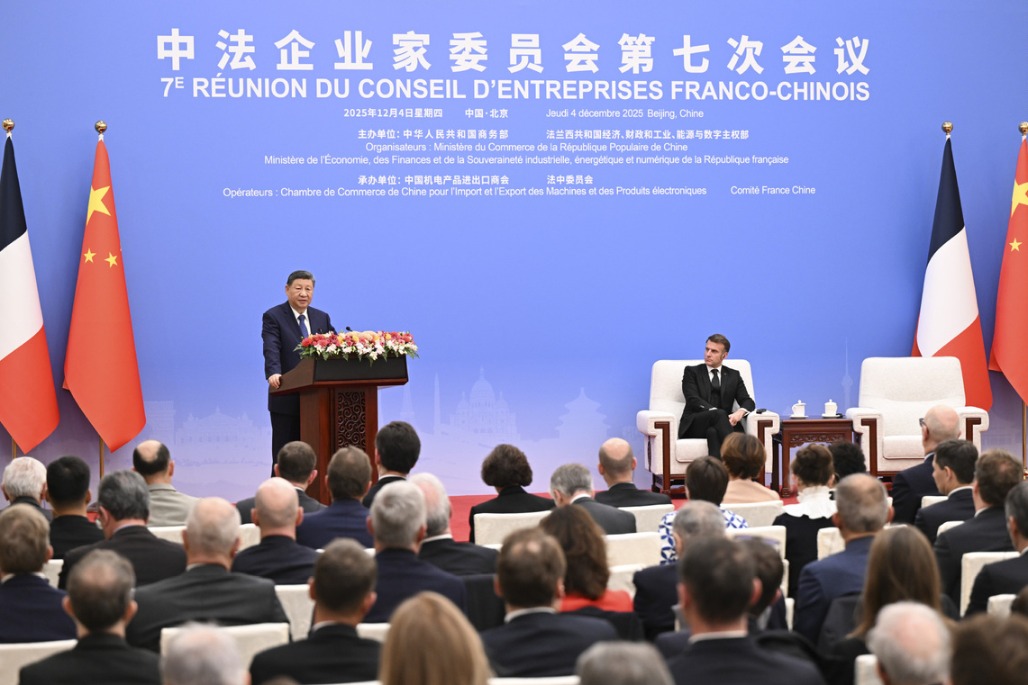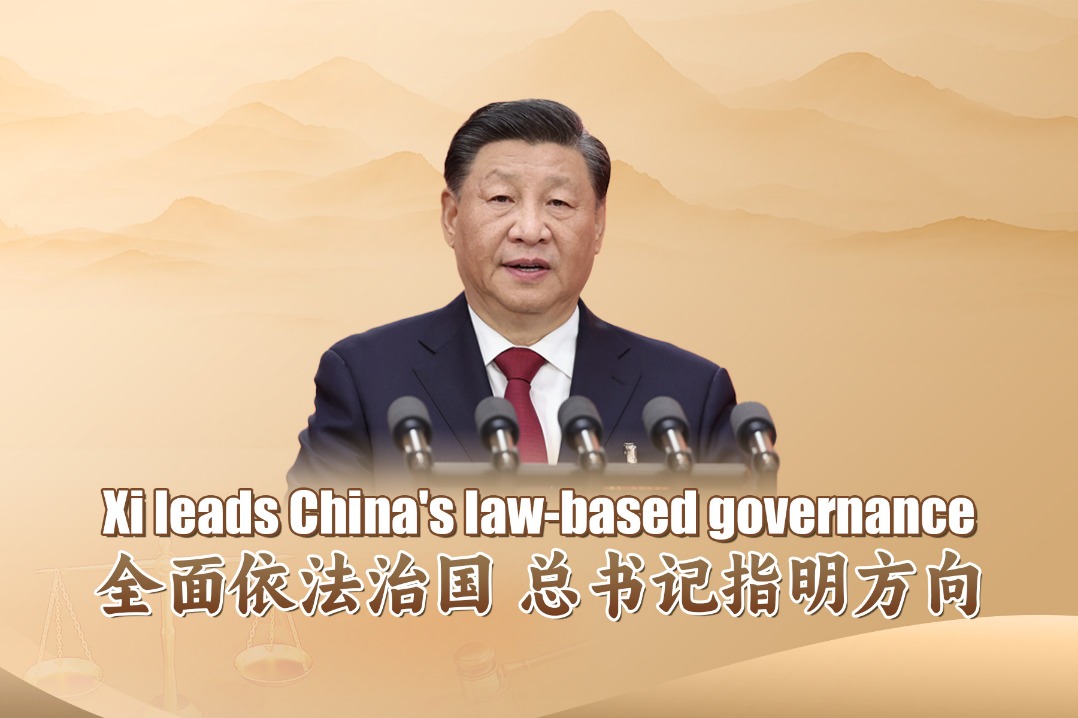Carmakers rev up efforts to reach carbon goals
By LI FUSHENG | China Daily Global | Updated: 2022-04-22 10:00

Editor's note: China aims to peak its carbon dioxide emissions before 2030 and achieve carbon neutrality before 2060, major goals in a national green transition drive. This series looks at efforts in various sectors to meet the goals.
At state-of-the-art Audi plants in China, colorful koi fish chase each other and happily snap up food. The water in which they frolic is processed wastewater that's been made clean and safe.
Water recycling at the two assembly workshops-one in Changchun, Jilin province, and the other in Foshan, Guangdong province-is just one part of the German carmaker's strategy to reduce carbon and promote sustainable growth, as Audi aims to become carbon-neutral worldwide by 2050.
"We will try our very best to support China's goal of carbon peaking by 2030 and carbon neutrality by 2060," said Audi China President Juergen Unser.
The carmaker said its Foshan plant, which was co-built with China's FAW Group, and the Anting plant in Shanghai, co-built with China's SAIC Motor, already use only renewable power through their photovoltaic systems and by purchasing green electricity from government-certified generators.
In addition to improvements in vehicle production, the pursuit of green goals has found carmakers in China cutting their vehicles' fuel consumption, investing heavily in research and development of hydrogen technology, fine-tuning supply chains and even exploring ways to recycle electric car batteries.
A total of 19.83 million sedans, SUVs and multipurpose vehicles were sold in China in 2020, with their average fuel consumption lowered to 5.61 liters of gasoline per 100 kilometers from 5.80 liters in 2018, according to statistics from the Ministry of Industry and Information Technology.
Dual credit system
This has been achieved thanks to China's dual credit system, which was put in place in April 2018 and prompts carmakers to use smaller engines or to improve engine efficiency while introducing electric cars, plug-in hybrids or hydrogen fuel vehicles that use little or no gasoline at all.
According to the system, carmakers generate negative credits if they fail to meet the country's fuel consumption standards, but they can earn positive credits by producing electrics cars, plug-in hybrids or hydrogen fuel vehicles.
If their positive credits are not enough to offset negative ones, the carmakers have to buy from others who have a surplus or they will face government fines.
The policy and the government's subsidies on new energy vehicles starting in 2009 have spurred the development of the NEV sector and helped cut carbon emissions from the very beginning.
"After several years of implementation, China's dual credit policy is starting to prove its significance in pushing carmakers toward electrification," said Julia An, an industry analyst at consulting firm Strategy Analytics. "They are proactively shaping their future electrification strategies, as compliance is now essentially a precondition of carmakers' ability to expand in the China market."
China has been the world's largest NEV market for seven years in a row, with production increasing from 507,000 units in 2016 to 3.52 million last year, said Xin Guobin, vice-minister of industry and information technology.
This has boosted the automotive sector's confidence in achieving the carbon peak goal in 2028, two years ahead of the nation's target, said Li Jun, head of the China Society of Automotive Engineers.
Li, also an automotive professor at Tsinghua University, said the society of engineers expects that by 2035-when new energy vehicles are to account for 50 percent of total vehicle sales, of which 90 percent will be electric cars-the sector's carbon emissions will be 20 percent less than the peak.
Some carmakers are exploring potential in other areas as well. Besides electric cars and plug-in hybrids, Great Wall Motors, China's largest SUV and pickup truck maker, is investing heavily in hydrogen vehicles as well.
The company, based in Baoding, Hebei province, aims to become carbon-neutral by 2045.
Wei Jianjun, chairman of Great Wall Motors, said the company has the world's largest and most complete hydrogen technology development center.
Its hydrogen vehicle solutions cover fuel cell batteries, on-board hydrogen storage systems and other core components.
Wei said the reason the company attaches such importance to hydrogen vehicles is the nature of the fuel.
"Hydrogen is regarded as the ultimate source of energy, which is green and renewable," Wei said. "So we are less concerned about specific vehicle models than technology development."
R&D spending
According to an investment plan unveiled in 2021, Great Wall Motors will spend 3 billion yuan ($465 million) on hydrogen-related research and development by 2024.
It plans to expand production and sales of core components and systems in China and aims to become a top-three company in hydrogen vehicle powertrain solutions by 2025.
Mu Feng, vice-president of Great Wall Motors, said: "If we have 1 million hydrogen fuel cell vehicles on our roads (instead of gasoline ones), we can cut carbon emissions by 510 million tons a year."
Guan Qingyou, a Beijing-based economist, said the two carbon goals are arduous for a country as big as China.
"We need technology breakthroughs, and I believe hydrogen may be one of them to count on," said Guan.
German carmaker BMW is making inroads on used electric car batteries in China as NEVs gain in popularity in the country, its largest market worldwide.
It sold 48,000 electric vehicles and plug-in hybrids to Chinese car buyers in 2021, up 69.6 percent from 2020.
BMW said it set up a team in 2017 to collect used BMW car batteries, which are then evaluated by licensed companies to be reused as power storage units or dismantled for raw materials.
"Our ambition is nothing less than to build the greenest electric vehicles in the entire industry, all the way from raw materials and supply chain to production and ultimately recycling," said Jochen Goller, president and CEO of BMW Group Region China.
The carmaker is producing two new electric models in China this year. By 2025, electric car sales will account for at least one-fourth of its total sales in the country.
Goller said that by 2030, CO2 emissions in vehicle production in its Chinese plants will be cut by 80 percent from 2019 levels.
By the same year, it will also cut CO2 emissions through its whole supply chain by 20 percent and CO2 emissions during vehicles' usage by 40 percent from 2019 levels, he said.
























